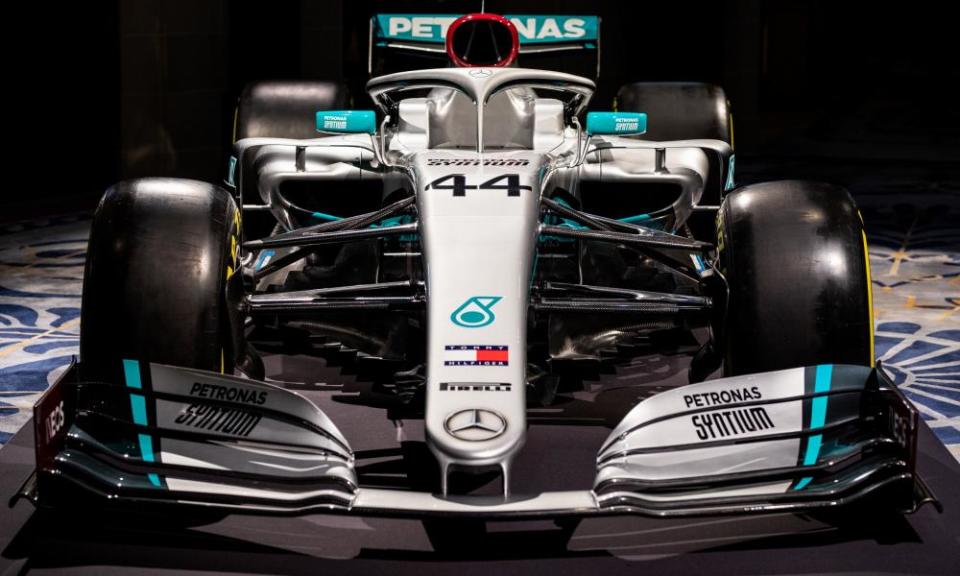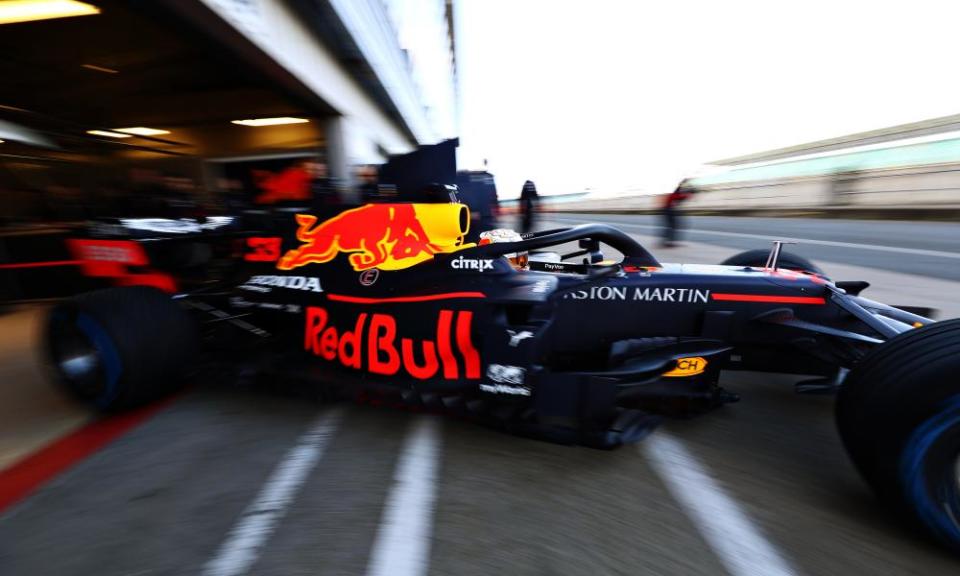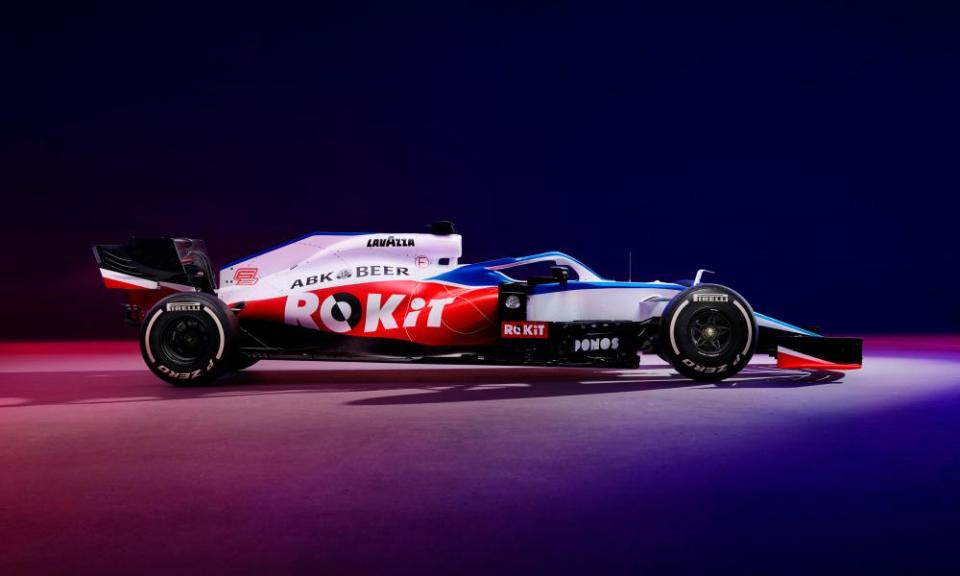How the big F1 teams shape up ahead of pre-season testing in Barcelona

Mercedes
Lewis Hamilton has the magic touch but he is without doubt also wielding the sharpest tools. And with the Mercedes W11, expectations are high again. With stable regulations this year evolution not revolution is the design philosophy across the grid. Mercedes, coming off asuccessful 2019 when they clinched their sixth consecutive drivers’ and constructors’ championship double, have the best possible baseline.
Related: Lewis Hamilton says Max Verstappen’s comments are ‘a sign of weakness’
With tighter rear packaging and what their technical director, James Allison, called an “adventurous” rear suspension, the team to beat are pursuing the strengths of last year’s car, especially aero efficiency. Last year Mercedes made major upgrades between testing and the first race, but no such development is expected this time. The car they have in Spain will be representative of their real challenger.
Ferrari
The Scuderia have more work to do. Last season they looked quickest in testing but were blown away by Mercedes in Melbourne. Their car’s low-drag concept was fast in a straight line but lacked pace through the corners. With downforce at a premium at the majority of circuits it proved a major flaw. This year their team principal, Mattia Binotto, insists they have opted for a more “extreme” design of the SF1000, named after the team’s 1000th race which it will contest this season.
The pursuit of more downforce has been the goal with aggressive, tighter packaging, while attempting to maintain the straight-line speed that was so strong. For Sebastian Vettel and Charles Leclerc optimism abounds that this might be the ride to really take on Mercedes. If Binotto’s boys are to make a fist of it they have to hit the ground running in Barcelona.
Red Bull
Repeatedly stymied by slow starts to the season in recent years, this time Red Bull are confident they have a car that is going to be quick out of the box. In 2019, after a slow start, they finished well. Honda’s engine upgrades across the year concluded with a power unit that was edging close to Mercedes and Ferrari. If they have made similar strides over the winter the team will be confident that the technical director Adrian Newey’s RB16 has the chops to make it a three-way fight.

Last year the car was a handful to manage in the first half of the season, this time they have a solid platform and are unquestionably a fearsome force at in-season development. Certainly Max Verstappen, third in the championship last year, might finally have his wish of being in the title fight from the off if they bring it in Barcelona.
McLaren
The team who have endured some shocking starts in testing of late finally put together a solid opening last year and McLaren proceeded to capitalise. Their fourth place in the championship was the team’s best finish since 2012. This year, with the big three still out of reach, holding that place is the goal.
They too developed strongly in 2019 and considerable elements of that, including concepts that could not be used on last year’s car, have been incorporated into the MCL35. This will be a huge test for both the technical director, James Key, for whom it will be the first McLaren entirely under his leadership, and the first full season in charge for the team principal, Andreas Seidl. Key has identified specific areas of weakness with last year’s car and has targeted them on the new model. In a tight midfield battle McLaren should be battling for best of the rest, while a deja-vu disaster is highly unlikely this time in testing.
Williams
Going through the worst spell in the team’s 43-year history, when testing opens there will be intense scrutiny on the once mighty British constructor. Finishing bottom of the championship for the last two years, 2019 was a nadir. Their car was not finished when testing began, a public humiliation of unprecedented scale. When it finally ran the lack of balance and downforce saw it hobbling round the track more than 1.5 seconds off the pace. This time the FW43 must fire up first time and show real progress in Barcelona.

The car is, interestingly, an evolution of the one that was so troublesome. The fundamental concept remains the same but its weaknesses targeted, including brakes, weight and cooling. The road to recovery is going to be long and no one is expecting short-term miracles but if there are to be green shoots they must be there to nurture in Spain.
And the rest
Renault, too, will be under the spotlight, not least because they did not bring a car to their launch – insisting that it was ahead of schedule but that they chose to prioritise the ongoing build. If they deliver there is still a huge amount to do for a works team who were targeting podiums within three years when they returned to F1 in 2016. This year the goal is fourth and the pressure is on, especially as the company considers its future in F1.

Haas suffered a dismal season last year, and has emerged with a car looking eerily similar to last year’s Ferrari. They need to find its window fast.
For the newly-named Alpha Tauri (formerly Toro Rosso); Alfa Romeo and Force India, consolidation is in order using pragmatic adaptations of last year’s cars, with Alfa’s design looking the most aggressive.

